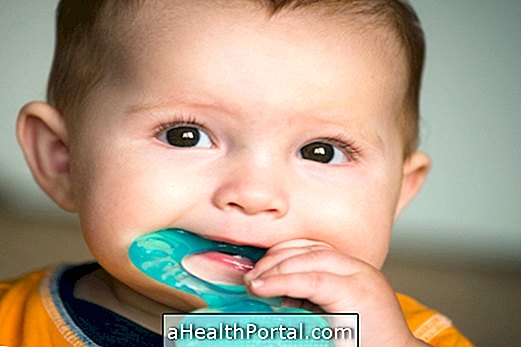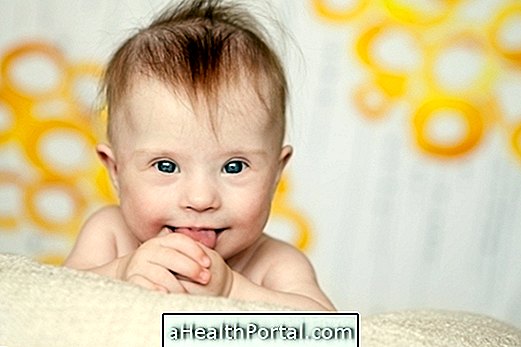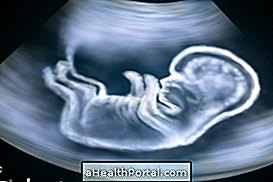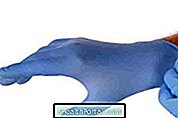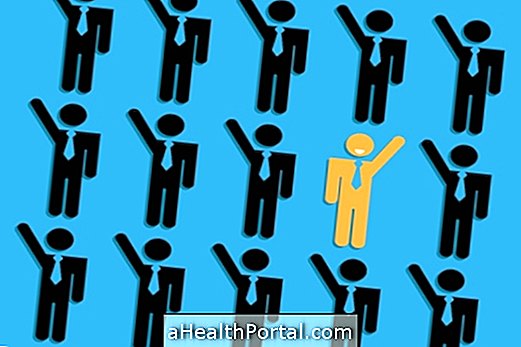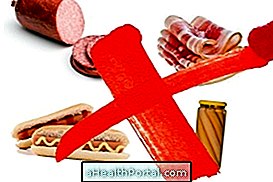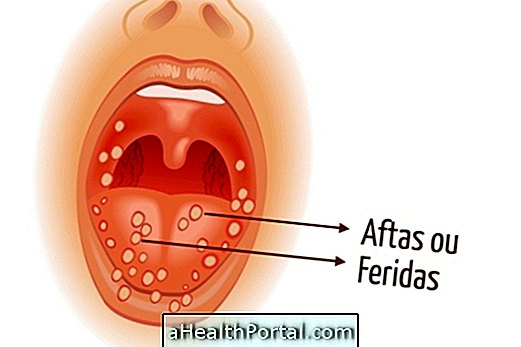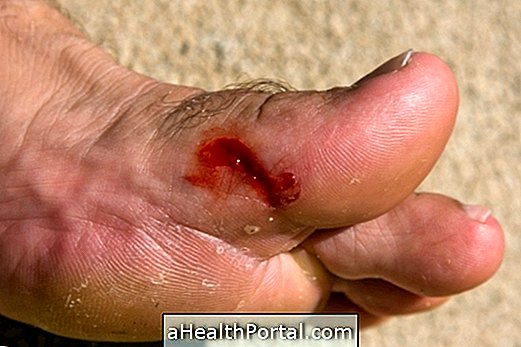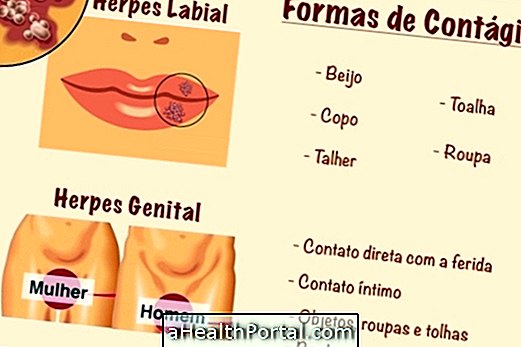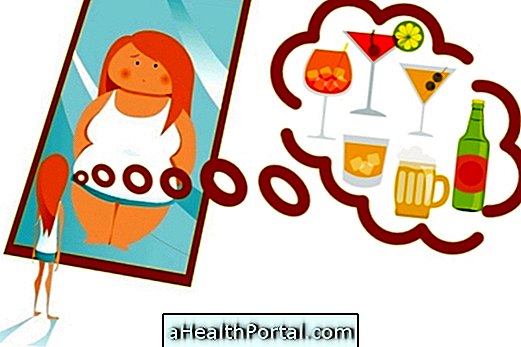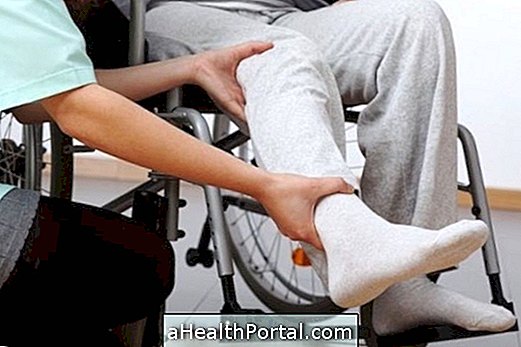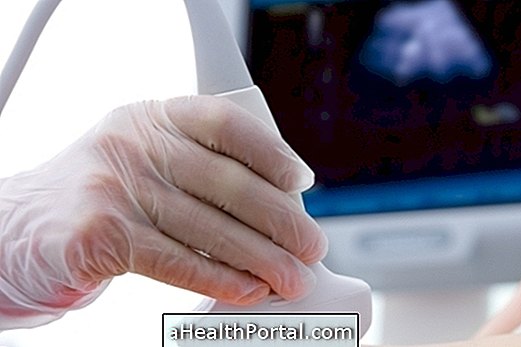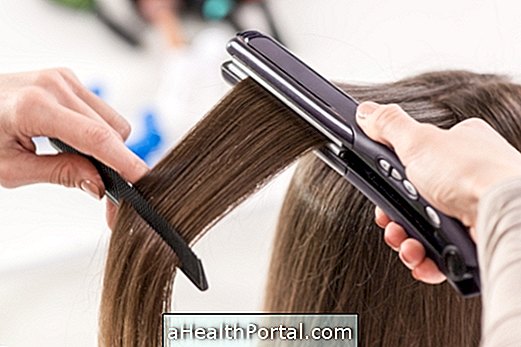The 3-month-old baby already stays awake longer and cares about what is around her. He is able to turn his head toward the sound, smile, look and shout spontaneously, to arouse the attention of adults. In addition, your expressions on the face can indicate joy, pleasure, indecision, anxiety and pain.
It is from this stage that the first tears appear, because the tear glands of the baby finally begin to function. Often the mother's voice is the baby's favorite sound and it's best to calm down when the baby cries because it means warmth, comfort, and food.
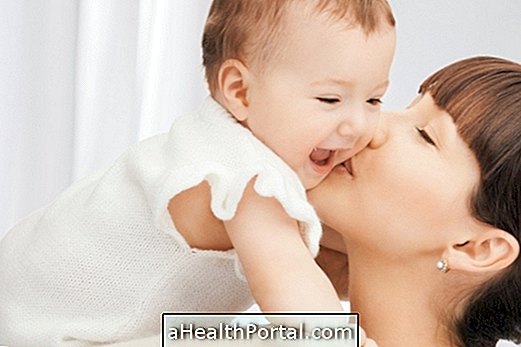
What does the baby at 3 months
The baby at 3 months already has greater coordination of arms, legs and hands, being able to move the limbs simultaneously, join hands and open fingers. The baby is already able to lift his head well and shake his toys or rattles.
His vision is more accurate and uses it to relate to those around him, participating more in the home, babbling, smiling and looking at people. Also, if the baby is in the how much, he is already able to look for the mother.
Baby weight at 3 months
The following table gives indications on the ideal baby's weight for this age, however, the weight may vary slightly, and the baby may have more or less weight.
| Boys | Girls | |
| Weight | 5.8 kg | 5.5 kg |
| Stature | 61 cm | 60 cm |
| Cephalic perimeter | 40.5 cm | 39 cm |
| Thoracic perimeter | 40 cm | 38 cm |
| Monthly weight gain | 750 g | 750 g |
On average, babies at this stage of development maintain a standard of weight gain of 750 g per month. However, it may happen that the weight is well above the values indicated here, and in this case it is possible that the baby is overweight and it is recommended to consult the pediatrician.
3 month old baby sleep
The sleep of the baby of 3 months begins to regularize. The internal clock begins to synchronize with the world around you, being able to identify the difference of sleep during the day and at night.
At this age, the baby sleeps a little less, on average 15 hours a day. Many may sleep through the night, however, those who are exclusively breastfed may still need to wake up every 3 hours to breastfeed.
The diapers should be changed whenever the baby poops, as this ends up disturbing your sleep, but you should avoid doing these changes at night so that the sleep is not interrupted.
Development of the baby at 3 months
The 3-month-old is able to raise and control his head when he is on his stomach and is also able to fix his gaze, showing preference for some objects and people. In addition, you can also smile in response to a gesture or the words of an adult, proving to be more interactive.
At this stage, there are also more spontaneous movements, which are less abrupt and impulsive than those of the 1st and 2nd month. Usually they are more lenses and repeated movements, being possible to notice that the baby is paying attention to the way they happen and how it manages to control its own body.
As for the hearing and the vision, the baby can already combine both senses, because in case of a noise, he is able to raise his head and look around, looking for its origin. The vision becomes clearer as well, so you begin to use it more to relate to those around you, babbling, smiling, and looking at people. Already in relation to the language, begins to emit the first sounds, stammering the vowels A, E and O.
Watch the video to learn what the baby is doing at this stage and how you can help him develop faster:

In some cases, the baby may have some strabismus, it seems that the eyes are squinting, but this tends to happen with age because it happens because there is still a total control of the muscles of the eyes. However, it is important to always be aware of the baby's reactions to the stimuli that are attributed to him, since it is from this age that more serious problems such as the hearing deficit can be diagnosed. Learn how to identify this problem in How to Identify Your Baby Does not Listen Well.
Play for the baby at 3 months
Playtime for the baby at 3 months can be useful to stimulate and increase the bond with the baby, being recommended that at this age parents:
- Let the baby bring his hand to his mouth so he starts to get interested in picking up objects. You can start with your hand closed, but over time the tendency is to open it to hit objects above your head;
- Offer teacups and other vibrant color instruments;
- Lay the baby on his belly down, and stand in front of him waving a toy on a higher level to encourage him to lift his head and trunk higher;
- Leave the baby in a raised position, always with support, for example, raising the baby a little or letting him in the comfort baby, so that he can better see the world around him;
- Read books for the baby, always varying the tone of the voice, using accents or singing, as this will help to develop the hearing and increase the affective bond;
- Encourage baby's touch with different materials such as plush, toilet paper, felt and various fabrics;
- Touch and massage the baby enough;
- Always play with the baby, directing him to words and giving time for him to respond with their sounds and their gestures;
It is important that the toys given to the baby are large, without tips and without paint so that it is not absorbed by the mouth, but also be strong, so that they do not break. In addition, stuffed animals should be avoided at this age as they can trigger allergies.
At this age, the baby should take daily walks, as the more he sees, the more he learns and these should be performed early in the morning and in the late afternoon from 5 pm to avoid agglomerations.
Baby feeding at 3 months
Feeding the baby at 3 months should be exclusive breast milk and should be kept, if possible, up to 6 months.
However, many mothers return to work at this stage, making exclusive breastfeeding impossible. If this happens and the mother has difficulty storing milk, supplement it with age-specific milk powder as instructed by the pediatrician. Learn more about how baby feeding should be for 3 months in Feeding from 0 to 6 months of the baby.
How to avoid accidents at this stage
To prevent accidents with the baby from 0 to 3 months, the adoption of safety measures by parents is essential. Some measures to avoid accidents can be:
- Carry baby in the car in the proper chair and never on the lap, facing backwards;
- Do not place the baby in the driver's seat if the airbag is active because it could hurt the baby in the event of an accident or otherwise deactivate the airbag;
- Do not leave the baby alone on a table or sofa for a second because the baby may fall;
- Put the baby to sleep on belly up to avoid suffocation and Sudden Death Syndrome;
- Do not put yarn or laces around the baby's neck or hang the pacifier;
- Do not put objects in the baby's bed;
- The mattress should be adapted to the bed so that there is no slack and the baby gets stuck;
- Always check the bath and milk water temperature before feeding.
In addition, when walking in the stroller with the baby put sunscreen itself, even being in the shade with the baby because his skin is still very sensitive, as well as hat and clothes that cover the whole body. At these ages, the baby is not recommended to go to the beach.
These measures must be respected by the parents to keep the baby as safe as possible.

